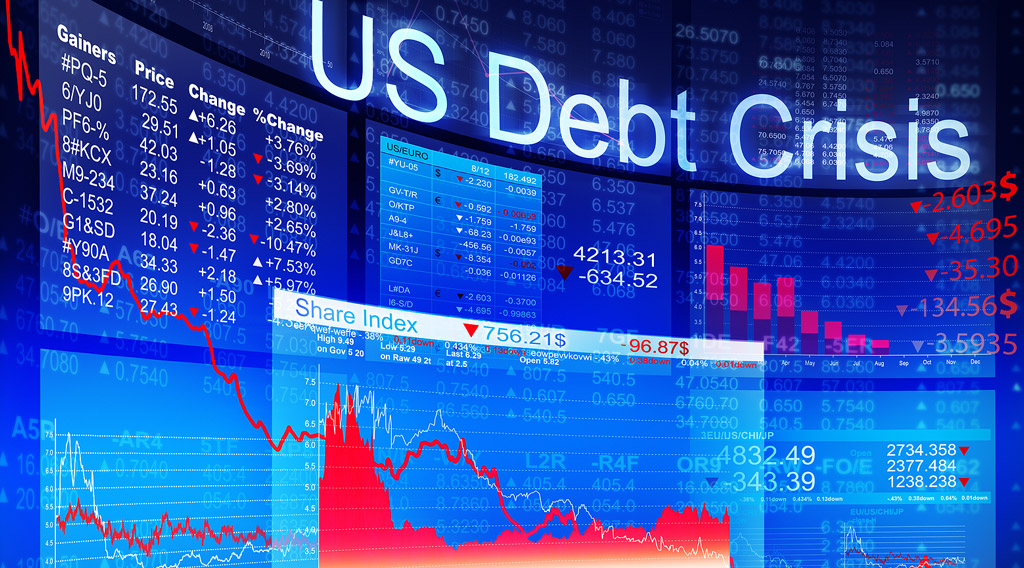 The interest on the national debt now costs the United States over $3 billion a day. Economists anticipate the Federal Reserve’s decisive interest rate cuts to provide short-term relief for both federal and household debt. However, the entrenched debt problem is expected to remain a long-term challenge that a lower-interest-rate economic environment cannot easily solve. With both parties married to excessive spending and printing, the national debt will likely continue growing, compounding the burden on future budgets and generations.
The interest on the national debt now costs the United States over $3 billion a day. Economists anticipate the Federal Reserve’s decisive interest rate cuts to provide short-term relief for both federal and household debt. However, the entrenched debt problem is expected to remain a long-term challenge that a lower-interest-rate economic environment cannot easily solve. With both parties married to excessive spending and printing, the national debt will likely continue growing, compounding the burden on future budgets and generations.
US Debt in Numbers
- The national debt stands at over $35 trillion, up from $32.8 trillion a year ago.
- The daily interest costs are $3 billion, or roughly $1 trillion annually.
- The debt-to-GDP ratio is nearing record highs at more than 121%.
- Deficit totals for 2024 are projected to reach $1.9 trillion, the third highest in US history.
- US debt is projected to hit $50 million by 2034 at its current pace.
Rate Cuts Bring Temporary Relief
Many are looking for relief from the Federal Reserve’s aggressive monetary policy, which has already implemented a 50-basis point rate cut and is projected to introduce another half-point reduction later this year. TD Wealth analysts suggest that while the shift toward quantitative easing may offer temporary relief, the long-term impact is limited.
“Interest rate cuts [will] give a break to families and businesses struggling to keep up with higher borrowing costs [but] won’t solve the overarching problem of a large government debt burden that only looks poised to grow in the years ahead.” This underscores the broader issue of the national debt, which rate cuts alone cannot address effectively.
Any Takers for US Debt?
Around 29% of US debt is held by foreign nations, which means that managing this debt relies heavily on the appetite these countries have for dollar-backed assets. Unfortunately, a recent report on foreign-held debt by the Congressional Research Service found that the national debt’s “unsustainable growth…could lead to foreigners at some point reevaluating and reducing their US asset holdings.” This is playing out in real-time, as Japan and China, two major holders of US debt, are offloading their reserves.
Growing Debt Fuels De-Dollarization
More and more countries are deciding that it’s not worth sticking around to watch the US debt bubble pop and put their economies at risk. This is why we are seeing a global shift toward de-dollarization, as nations around the world seek to reduce their reliance on the US dollar and diversify into other currencies and assets. The flip side of this dollar dump is a modern-day gold rush as central banks buy the yellow metal at record rates.
Golden Recommendations
A growing number of economists, financial advisors, and institutions are encouraging investors to follow the lead of central banks by bolstering their portfolios with safe-haven assets like precious metals. Steve Foresti, a senior investment adviser at Wilshire Advisors, suggests that “clients add a basket of assets to their equity and bond portfolios that could help offset inflation pressures over time.” Similarly, Bank of America recently advised investors to buy gold like central banks, and Goldman Sachs recommended that clients go for gold in a recent report, emphasizing the value of precious metals as a hedge in uncertain economic times.
The Bigger Picture
Our fiscal leaders claim the US is headed for a “soft landing” and that fears of a recession are unfounded. Still, the government is failing to address the $35 trillion debt in a meaningful way, given that neither party has laid out a clear plan to tackle the crisis. Foreign countries are already deciding that the US dollar is a risky bet, opting for the relatively steady shores of physical gold. The forecast of a devaluing dollar puts Americans at financial risk as investment portfolios and retirement plans would decrease in value. Savvy investors are following the moves of central banks to protect their wealth from USD weakness.


